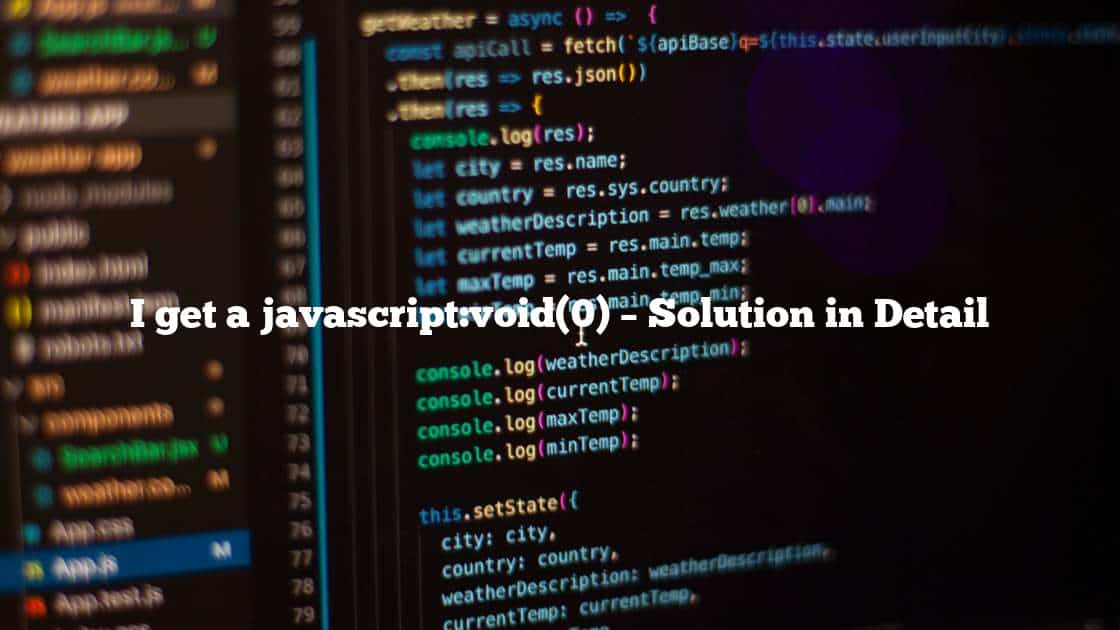Table of Contents
What does “javascript:void(0)” mean?
“javascript:void(0)” is a JavaScript expression that is often used as the value of an HTML anchor element’s href attribute. When the anchor element is clicked, the expression is evaluated, but it does not have any effect on the page.
One common use for “javascript:void(0)” is to create a link that does something other than navigate to a new page when clicked. For example, you might use it to open a dialog box or to submit a form using JavaScript.
Here is an example of an HTML anchor element that uses “javascript:void(0)” as the value of the href attribute:
<a href="javascript:void(0)" onclick="openDialog()">Open Dialog</a>In this example, when the link is clicked, the openDialog() function will be called, but the page will not navigate to a new location.
Note that “javascript:void(0)” is not considered a good practice in modern web development, because it requires JavaScript to be enabled in the browser and it can be confusing to users. A better approach is to use regular anchor elements with href="#" and to use JavaScript to handle the click event and perform the desired action.
Preventing a Page to Reload Using JavaScript Void 0
To prevent a page from reloading when an anchor element is clicked, you can use the “javascript:void(0)” expression as the value of the href attribute, and then use JavaScript to handle the click event and prevent the default action from occurring.
Here is an example of how you can do this:
<a href="javascript:void(0)" onclick="preventReload()">Click me</a>
<script>
function preventReload() {
// Prevent the default action from occurring
event.preventDefault();
// Do something else here, such as submitting a form or opening a dialog box
}
</script>In this example, when the anchor element is clicked, the preventReload() function is called, which prevents the default action (reloading the page) from occurring. You can then add any additional code you want to the function, such as submitting a form or opening a dialog box.
Note that this approach requires JavaScript to be enabled in the browser. If you want to ensure that your page works even when JavaScript is disabled, you should use regular anchor elements with href="#" and use JavaScript to handle the click event and prevent the default action from occurring.
For example:
<a href="#" onclick="preventReload()">Click me</a>
<script>
function preventReload() {
// Prevent the default action from occurring
event.preventDefault();
// Do something else here, such as submitting a form or opening a dialog box
}
</script>In this case, if JavaScript is disabled, the anchor element will still behave as a regular link and navigate to the current page, but if JavaScript is enabled, the preventReload() function will be called and the default.

